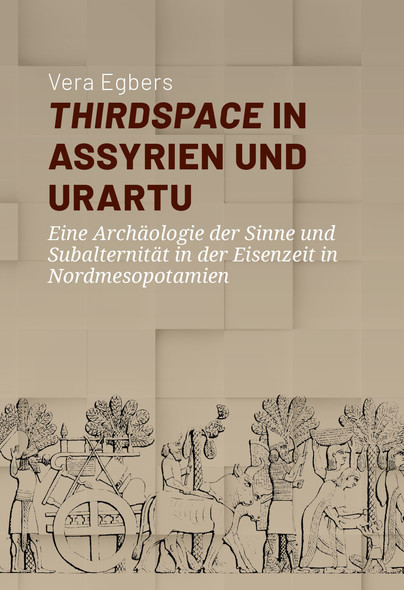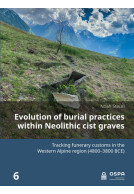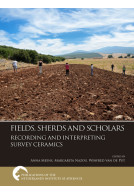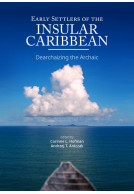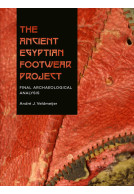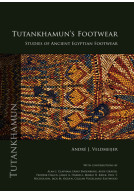Thirdspace in Assyrien und Urartu (Paperback)
Eine Archäologie der Sinne und Subalternität in der Eisenzeit in Nordmesopotamien
Imprint: Sidestone Press
Pages: 330
Illustrations: 51fc / 78bw
ISBN: 9789464280548
Published: 25th May 2023
Script Academic
Pages: 330
Illustrations: 51fc / 78bw
ISBN: 9789464280548
Published: 25th May 2023
Script Academic
Please note this book may be printed for your order so despatch times may be slightly longer than usual.
You'll be £60.00 closer to your next £10.00 credit when you purchase Thirdspace in Assyrien und Urartu. What's this?
+£4.99 UK Delivery or free UK delivery if order is over £40
(click here for international delivery rates)
Order within the next 1 hour, 4 minutes to get your order processed the next working day!
Need a currency converter? Check XE.com for live rates
(click here for international delivery rates)
Order within the next 1 hour, 4 minutes to get your order processed the next working day!
Need a currency converter? Check XE.com for live rates
Wie lässt sich Subalternität in der Vergangenheit untersuchen, wenn heute fast ausschließlich Hinterlassenschaften der Eliten erhalten sind? Warum lohnt sich eine solche Untersuchung und wo führt sie hin? Diesen Fragen wird in dem vorliegenden Buch über die Beziehung von Assyrien und Urartu im eisenzeitlichen Nordmesopotamien (ca. 9. bis 7. Jh. v.u.Z.) nachgegangen. Denn zwischen den kriegerischen Nachbarn gab es eine Vielzahl Deportierter und Kriegsgefangener, deren Erfahrungen und Leben in der Forschung bisher wenig Beachtung fanden. Dabei konnten postmoderne und postkoloniale Denker:innen aus Literaturwissenschaften, Humangeographie oder Soziologie unlängst darlegen, dass historisch oft gerade diese ausgegrenzten, vergessenen gesellschaftlichen Gruppen zum Motor von Veränderung werden.Dieses Buch reiht sich ein in einen interdisziplinären Diskurs über Subjektivierung, Produktion von (sozialem) Raum, Subalternität und Habitus, und integriert diese Konzepte in die Archäologie Westasiens. Dabei werden verschiedene Orte mittels Methoden aus dem Feld der „Archäologie der Sinne“ quantitativ und qualitativ untersucht, um auf die Grundzüge der sinnlichen Organisation Urartus und Assyriens zu schließen. Die Gegenüberstellung der so rekonstruierten sensorischen Welten geschieht vor dem Hintergrund der Frage, wie Deportierte und Kriegsgefangene nach ihrer Verschleppung die neue Umgebung wahrnahmen. Welche Auswirkungen hatte dieser abrupte Wandel der Lebensverhältnisse durch Gefangenschaft und Zwangsumsiedlung? Wie wurden die neuen, subalternen Subjektpositionen nonverbal mittels räumlicher Ordnung kommuniziert und evoziert – und gab es Stellen, an denen es durch Irritation, Missverständnis und ungeplantes Verhalten zu niedrigschwelliger Subversion kam?English abstractHow can subalternity be studied in the past when today almost exclusively the remains of the elites are preserved? Why is such an investigation worthwhile and where does it lead? These are the questions Vera Egbers explores in her book on the relationship of Assyria and Urartu in Iron Age northern Mesopotamia (c. 9th to 7th centuries BCE). For between these neighbors, who were engaged in an ongoing violent conflict, there were the numerous deportees and prisoners of war whose experiences and lives have received little attention in research to date. Yet postmodern and postcolonial thinkers from literary studies, human geography, and sociology have already demonstrated that historically it is often these marginalized, forgotten social groups that become the engine of change.This book joins an interdisciplinary discourse on subjectivation, production of (social) space, subalternity, and habitus, and integrates these concepts into the archaeology of West Asia. In doing so, various sites are examined quantitatively and qualitatively using methods from the field of the so-called archaeology of the senses, in order to infer the basic features of the sensory organization of Urartu and Assyria. The comparison of these reconstructed sensory worlds takes place against the background of the question of how deportees and prisoners of war perceived the new environment after their deportation. What were the effects of this abrupt change in living conditions due to captivity and forced resettlement? How were the new, subaltern subject positions communicated and evoked nonverbally by means of spatial organization – and were there places where low-threshold subversion occurred through irritation, misunderstanding, and unplanned behavior?
Other titles in Sidestone Press...







